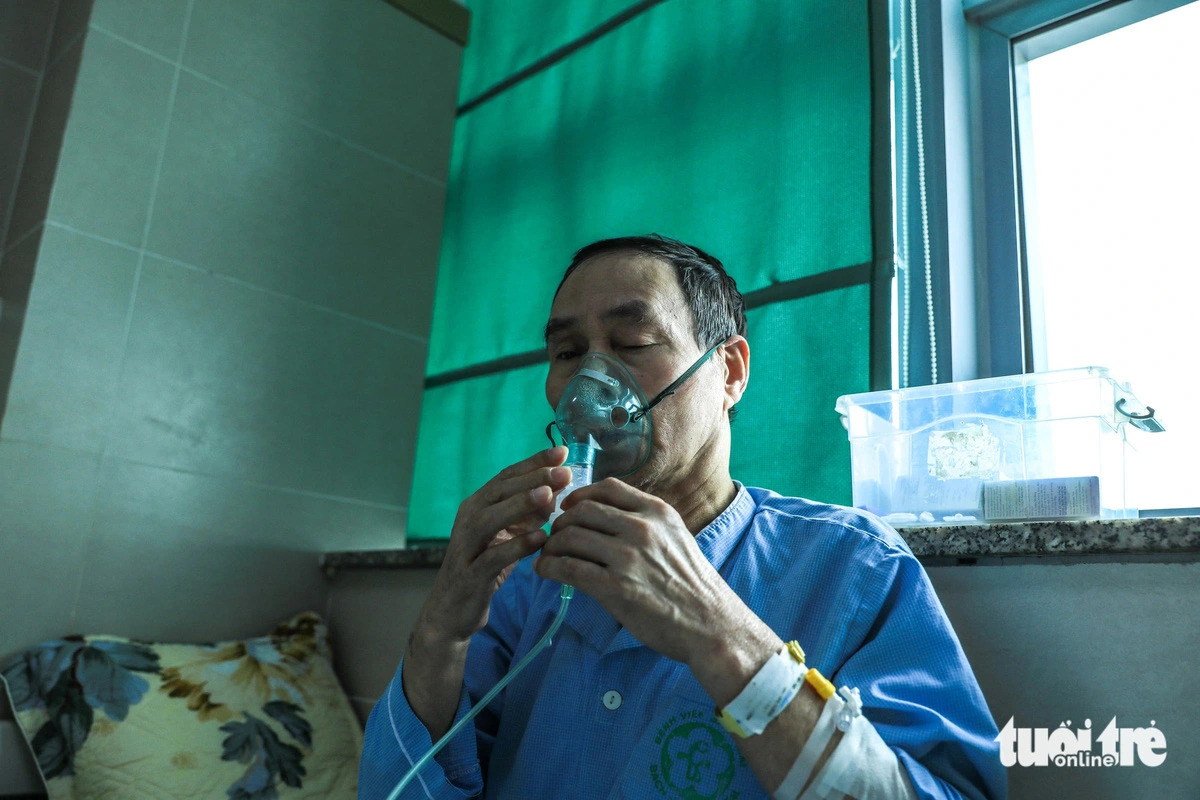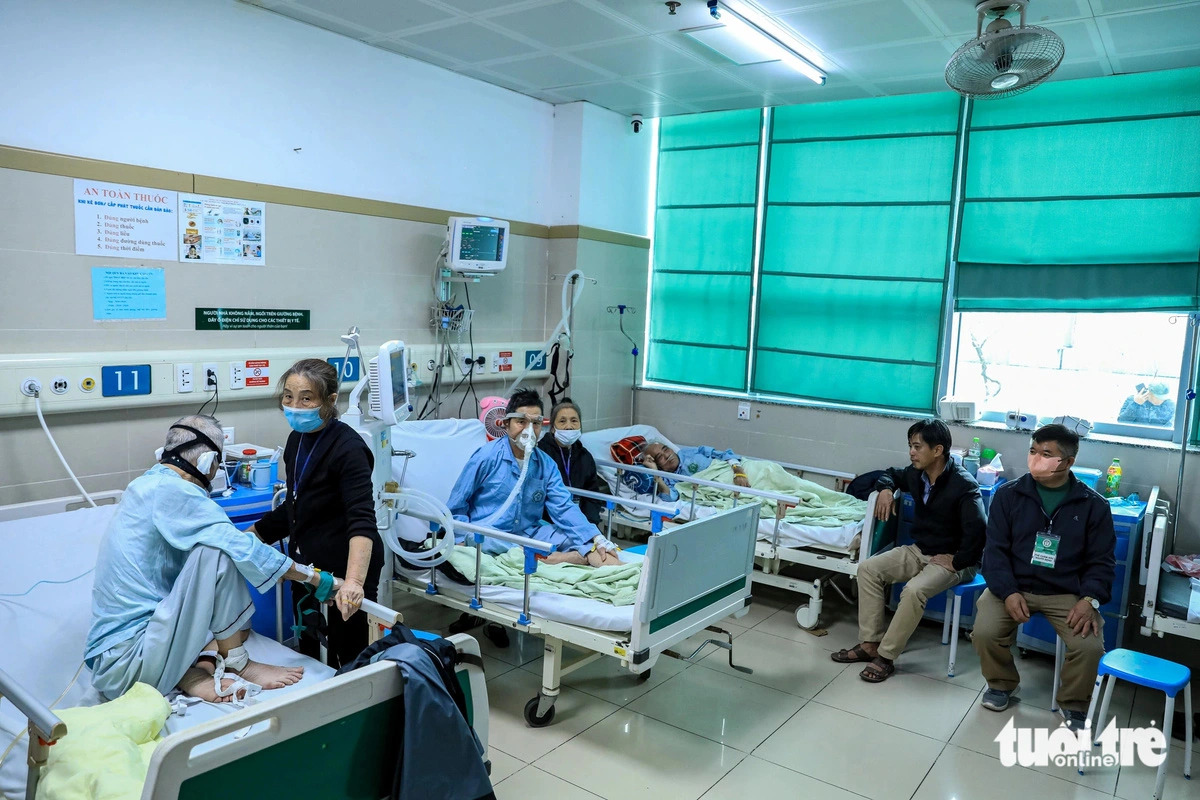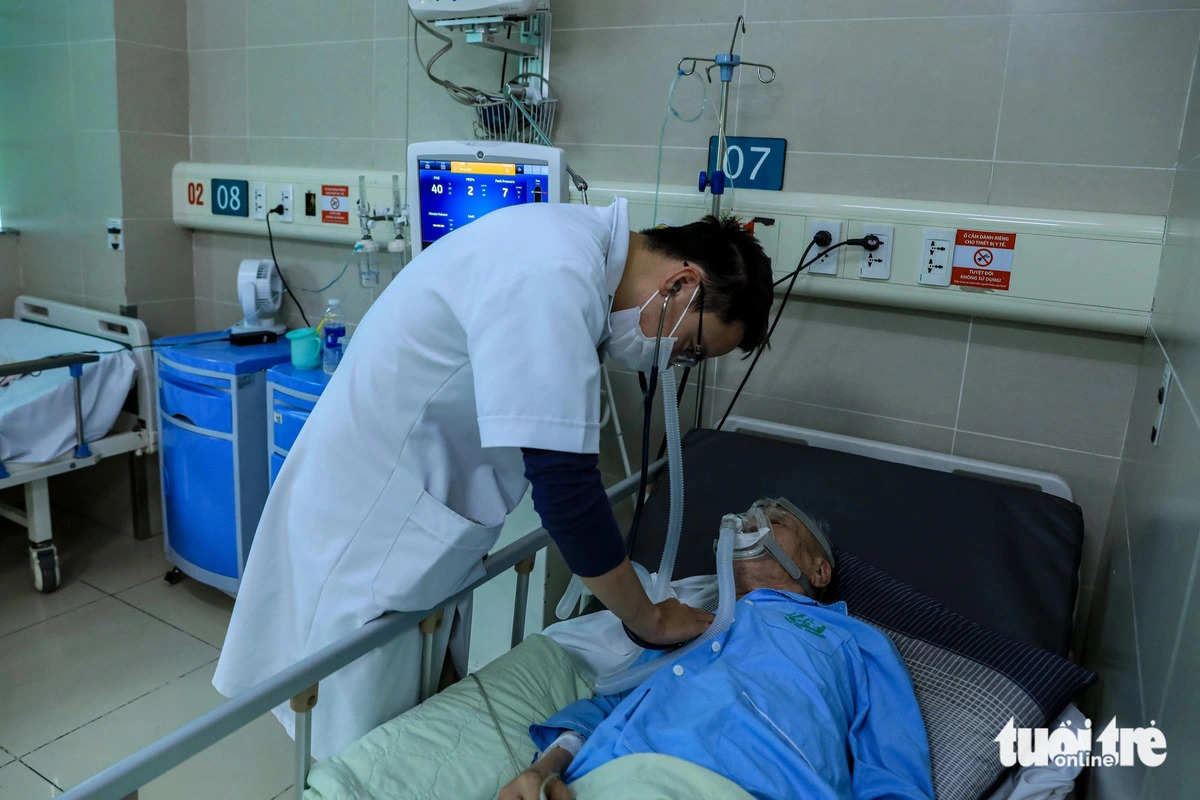Air pollution in Hanoi has become a major public health issue, as increasing cases of respiratory illnesses prompt healthcare experts to warn about severe long-term health consequences from prolonged exposure.
Environmental experts highlight that air pollution in the Vietnamese capital peaks between October and March.
Factors such as increased traffic congestion, reduced rainfall, stagnant air, and active construction projects contribute significantly to deteriorating air quality.
Pollution levels often worsen during and after the Lunar New Year (Tet) holiday, which falls on January 29 this year, due to heightened transportation and construction activities.
Many residents are already suffering from the effects of air pollution.
Hoang Van San, a 69-year-old resident of Hanoi’s Dong Da District, was recently hospitalized with chronic obstructive pulmonary disease (COPD). He attributed his condition to dust pollution from a neighbor’s home renovation.
Similarly, Nguyen Hoai Thanh, a 62-year-old retired teacher from northern Nam Dinh Province, developed a persistent cough shortly after retiring.
|
|
| A patient room at the Respiratory Center, Bach Mai Hospital, Hanoi, Vietnam. Photo: D. Khang |
Initially diagnosed with pneumonia owing to air pollution by a local hospital, he required further treatment in Hanoi.
Another case is that of H., a 56-year-old woman living near a national highway who developed pneumonia after prolonged exposure to vehicular dust and pollution.
For parents like Huyen, a 38-year-old mother in Hanoi, air pollution is a constant concern for her seven-year-old son, who suffers from congenital asthma, with worsening symptoms during peak pollution periods.
The Central Lung Hospital in Hanoi has reported a 20-percent rise in respiratory disease cases during high-pollution periods.
Dr. Bui Thu Huong from the hospital explained that harmful airborne substances weaken the immune system, making individuals more susceptible to severe respiratory conditions, especially in cold weather.
Chronic illnesses such as COPD and asthma tend to worsen, often leading to acute medical emergencies.
Bach Mai Hospital in the capital has also recorded a significant influx of patients suffering from respiratory ailments.
Dr. Bui Nhu Khoat from the hospital’s respiratory center emphasized that prolonged exposure to high levels of smoke and dust not only affects lung health but also impacts the nervous system, cardiovascular health, skin, and eyes.
Assoc. Prof. Dr. Phan Thu Phuong, director of the center, warned that the harmful effects of air pollution are cumulative and could lead to severe health issues.
According to Tap Chi Moi Truong (Environmental Magazine), air pollution in Vietnam – specifically in Hanoi – is worsening, posing significant threats to public health and economic growth.
Major pollution sources include traffic, construction, industry, agriculture, and everyday human activities.
|
|
| Dr. Bui Nhu Khoat from the Respiratory Center of Bach Mai Hospital in Hanoi, Vietnam examines an elderly patient with a respiratory illness in the emergency room. Photo: D. Khang / Tuoi Tre |
A recent national environmental report identifies hazardous fine particles (PM2.5) as the primary pollutant in Hanoi and other northern provinces.
Often referred to as an ‘invisible killer,’ PM2.5 particles are difficult to detect but pose serious health risks.
These microscopic particles penetrate deep into the lungs, increasing the likelihood of respiratory and cardiovascular diseases, particularly among children and the elderly.
On January 3, air pollution levels in Hanoi were recorded at 266 micrograms per cubic meter – the highest among the most polluted cities, Reuters reported, citing AirVisual, an independent global air pollution monitoring platform.
The World Health Organization (WHO) warns that exposure to fine particles in polluted air can cause severe health conditions, including stroke, heart disease, lung cancer, COPD, and respiratory infections.
According to WHO research, more than 60,000 deaths in Vietnam in 2016 from heart disease, stroke, lung cancer, COPD, and pneumonia were linked to air pollution.
The severity of air pollution in Hanoi has caught the attention of the central government.
At the fifth meeting of the Coordinating Council for the Red River Delta Region on January 14, Prime Minister Pham Minh Chinh acknowledged air pollution as a critical issue requiring urgent action.
He urged Hanoi and surrounding provinces to implement projects aimed at reducing pollution, alleviating traffic congestion, and restoring polluted rivers.
Authorities have been given a deadline in the first quarter of 2025 to present comprehensive plans and funding strategies to address these environmental challenges.
Like us on Facebook or follow us on Twitter to get the latest news about Vietnam!

























































